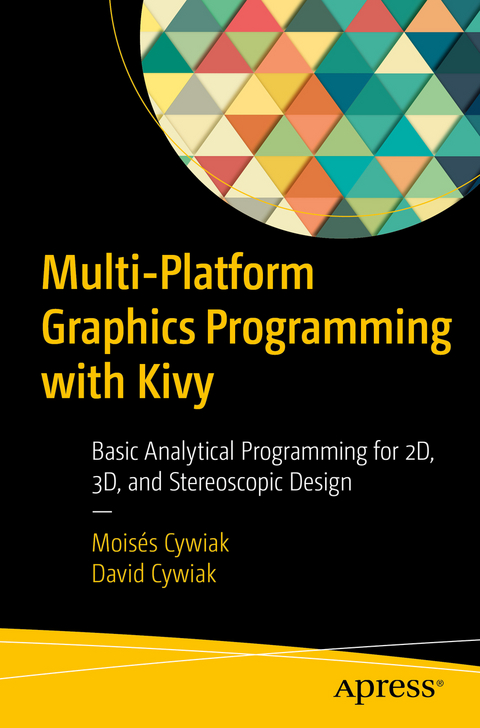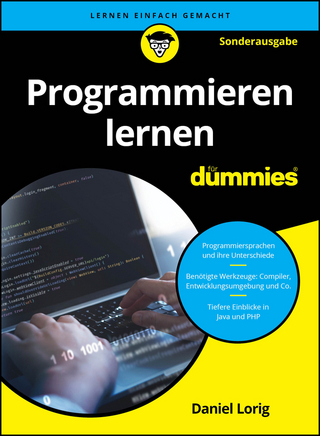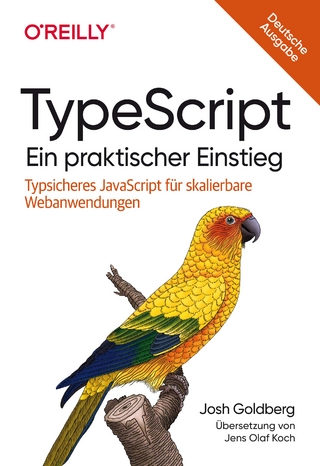
Multi-Platform Graphics Programming with Kivy
Apress (Verlag)
978-1-4842-7112-4 (ISBN)
Multi-Platform Graphics Programming with Kivy provides a straightforward introductory approach for designing 2D, 3D, and stereoscopic applications, using analytical equations from vector algebra. Throughout the book you’ll look closely at this approach and develop scenes in Kivy, taking advantage of powerful mathematical functions for arrays by NumPy for Python.
Unbuntu is used to develop the programs, which allows you to easily convert to Android platform. Each chapter contains step-by-step descriptions on each subject and provides complete program listings.
What You’ll Learn
Workwith Kivy, a modern, powerful multi-platform graphics system
Convert and run programs on Android devices
Program, fill faces, and rotate 2D and 3D polygons
Apply the concepts of 2D and 3D applications
Develop stereoscopic scenes
Review a straightforward introduction to 2D, 3D, and stereoscopic graphics applications
Use simple analytical equations from vector algebra
Who This Book Is For
The primary audience is students and researchers in graphics programming with experience in analytical equations.
Moisés Cywiak is a researcher in physical optical sciences with over 20 years of teaching experience in physics, mathematics, electronic engineering, and programming in C, C++, and python, in Centro de Investigaciones en Óptica A.C. David Cywiak received his Ph.D. degree in physics in 2014 from Universidad de Guanajuato. From 2012 to 2013 he collaborated as a guest researcher at the Dalton Cardiovascular Research Center, University of Missouri-Columbia, in the development of an optical-photoacoustic system intended for the detection of photoacoustic signals generated by cancerous cells. Since 2014 he has been working as a metrologist in the Thermometry Department at Centro Nacional de Metrologia, México. His research includes photoacoustics, optical engineering and radiation thermometry. He has over 7 years of experience teaching physics, mathematics and programming in C for undergraduate students. He also has over 5 years of experience teaching Temperature measurement techniques and calibration of instruments in the thermometry area for industry professionals.
Chapter 1: Getting Started: Software installation.- Chapter 2: Two-Dimensional Mapping and Rotation Equations of a Point.- Chapter 3: Two Dimensional Polygon Programming.- Chapter 4: Three-Dimensional Projections and Rotations.- Chapter 5: Programming Three-Dimensional Polygons.- Chapter 6: Stereoscopic 3D Programming.- Chapter 7: 3D plots programming.- Chapter 8: Stereoscopic 3D Plots.- Chapter 9: Parametric 3D Plotting.- Chapter 10: Stereoscopic Parametric 3D Plots.- Chapter 11: Sympy.- Chapter 12: Plotting Functions in Spherical Coordinates.- Chapter 13: Stereoscopic Plots in Spherical Coordinates.- Chapter 14: Stereoscopic Simple Numerical Method for the Gravitational N-body Problem.- Chapter 15: Stereoscopic Cylindrical Coordinates Plotting. - Chapter 16: Stereoscopic Plotting of Three-Dimensional Conics.- Chapter 17: Two-Dimensional Fourier Transform.- Chapter 18: Stereoscopic Two-Dimensional Fourier Transform.
| Erscheinungsdatum | 28.06.2021 |
|---|---|
| Zusatzinfo | 33 Illustrations, color; 9 Illustrations, black and white; XIII, 370 p. 42 illus., 33 illus. in color. |
| Verlagsort | Berkley |
| Sprache | englisch |
| Maße | 155 x 235 mm |
| Themenwelt | Mathematik / Informatik ► Informatik ► Programmiersprachen / -werkzeuge |
| Mathematik / Informatik ► Informatik ► Software Entwicklung | |
| ISBN-10 | 1-4842-7112-2 / 1484271122 |
| ISBN-13 | 978-1-4842-7112-4 / 9781484271124 |
| Zustand | Neuware |
| Informationen gemäß Produktsicherheitsverordnung (GPSR) | |
| Haben Sie eine Frage zum Produkt? |
aus dem Bereich


